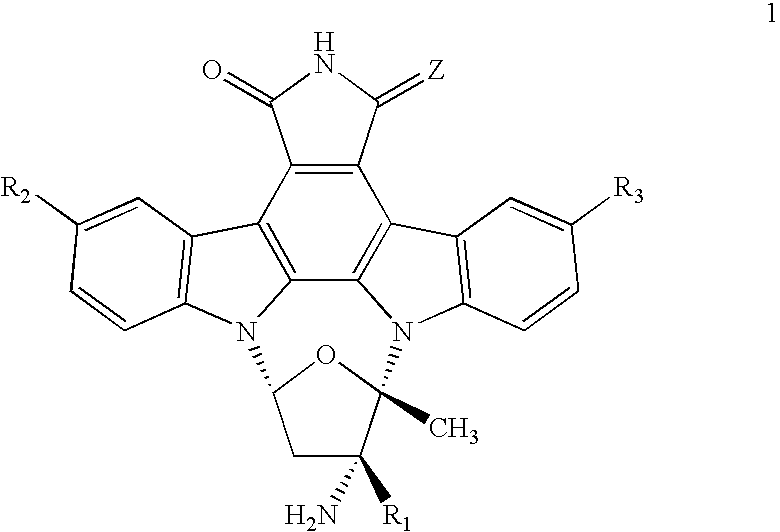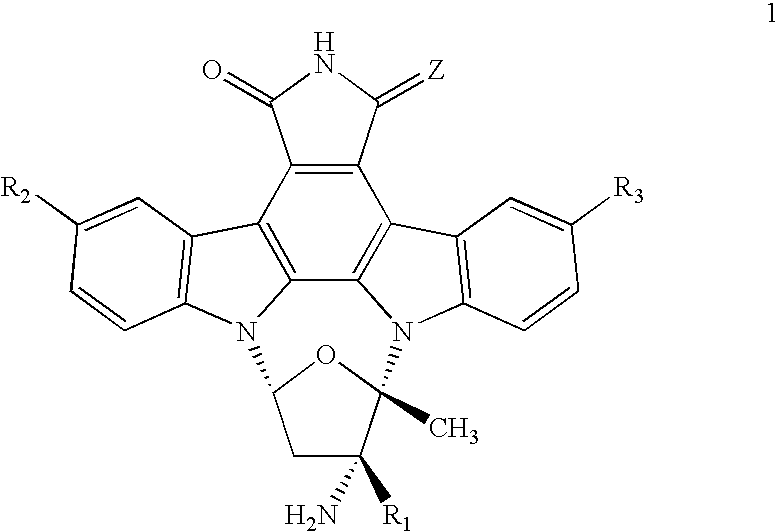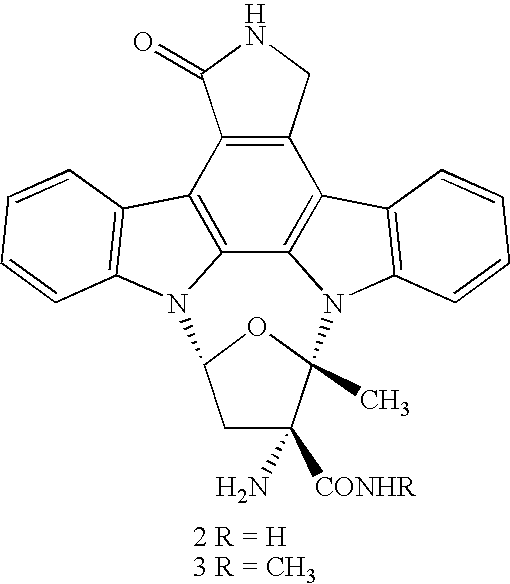Composition and method for the treatment of tauopathies
a tauopathies and tauopathies technology, applied in the field of tauopathies composition and treatment, can solve the problems of difficult to prove, provide for racemic compounds, and not show a high degree of kinase specificity, and achieve the effects of convenient synthetic access, high degree of kinase specificity, and improved physicochemical properties
- Summary
- Abstract
- Description
- Claims
- Application Information
AI Technical Summary
Benefits of technology
Problems solved by technology
Method used
Image
Examples
example 1
Titration of Tau Hyperphosphorylation Inhibitors in a Rat Hippocampal Brain Slice Model
[0128]Adult male Wistar rats of about 300 gram weight (3 months old) were briefly anesthetized with CO2 and decapitated. The brains were removed within 2 min and the hippocampus was dissected using a blunt spatula. The hippocampi were cut into 0.45 mM slices using a McIlwain tissue chopper and placed into ice-cold low calcium Krebs-bicarbonate buffer (pH 7.0): 124 mM NaCl, 3.33 mM KCl, 0.01 mM CaCl2, 1.25 mM KH2PO4, 1.33 mM MgSO4, 25.7 mM NaHCO3, 10 mM D-glucose and 20 mM HEPES. 5-8 slices were placed into a tube with 5 ml of low calcium buffer and incubated for at least 30 min at 33-34° C. with water saturated oxygenation (95% O2, 5% CO2). After 30 min, the solution was replaced with a buffer containing a physiological level of calcium (1.3 mM) and incubated for an additional 30 min. After a total equilibration period of at least 1 hr, the slices were preincubated for 15 min with concentrations o...
example 2
Determination of the Dosage for Required Brain Exposure In Vivo for the Compound of Formula 3
[0130]In order to assess the dosage for required in vivo brain exposure, 10 mg / kg of the hydrochloride of the compound of formula 3 in a vehicle of 1.5 ml / kg PEG 400 Macrogol Ph. Eur. were applied i.v. through the femoral vein to two groups (n=3) of overnight fasted Wistar Rats weighing between 240-270 gram. The application was performed under anesthesia, initiated with 3.5% Isofluorane / O2, then maintained at 1% during compound application and suture of the vein. 200 μl of local anesthetic lidocaine were administered locally. One hour after application of the compound 200 μl of blood were obtained by tail vein incision. Immediately following the blood sampling, rats were terminated by decapitation after brief CO2 anesthesia. Brains and spinal cords were resected and weighed. Plasma was obtained by centrifugation of the tail vein blood at 13000×g for 20 minutes at 4° C. Using the methods desc...
example 3
Treatment of P301L-tau Transgenic Mice, Suffering from Neurofibrillary Degeneration
[0134]A cohort of 61 transgenic mice of the same age, homozygous for the 4R0N splice isoform of human P301L-mutant tau transgene (JNPL3 line, obtainable from Taconic Farms, NY), is divided into two groups comprising 30 mice to receive treatment with the compound of formula 3 and 31 mice to receive vehicle only or, alternatively, to remain untreated (controls).
[0135]The therapeutic regimen in the treatment group is initiated as soon as the first mouse shows symptoms of motor deficits, usually around 8 months after birth; this mouse is thereafter excluded from the control group, reducing the group size to 30 mice. The treatment schedule comprises the application by oral gavage of twice daily a dose of 10 mg / kg of the compound of formula 3 dissolved as the hydrochloride salt in PEG400 Macrogol Ph. Eur. at a concentration of about 5 mg / ml. The compound is administered early in the morning and late in the ...
PUM
| Property | Measurement | Unit |
|---|---|---|
| weight | aaaaa | aaaaa |
| pH | aaaaa | aaaaa |
| pH | aaaaa | aaaaa |
Abstract
Description
Claims
Application Information
 Login to View More
Login to View More - R&D
- Intellectual Property
- Life Sciences
- Materials
- Tech Scout
- Unparalleled Data Quality
- Higher Quality Content
- 60% Fewer Hallucinations
Browse by: Latest US Patents, China's latest patents, Technical Efficacy Thesaurus, Application Domain, Technology Topic, Popular Technical Reports.
© 2025 PatSnap. All rights reserved.Legal|Privacy policy|Modern Slavery Act Transparency Statement|Sitemap|About US| Contact US: help@patsnap.com



